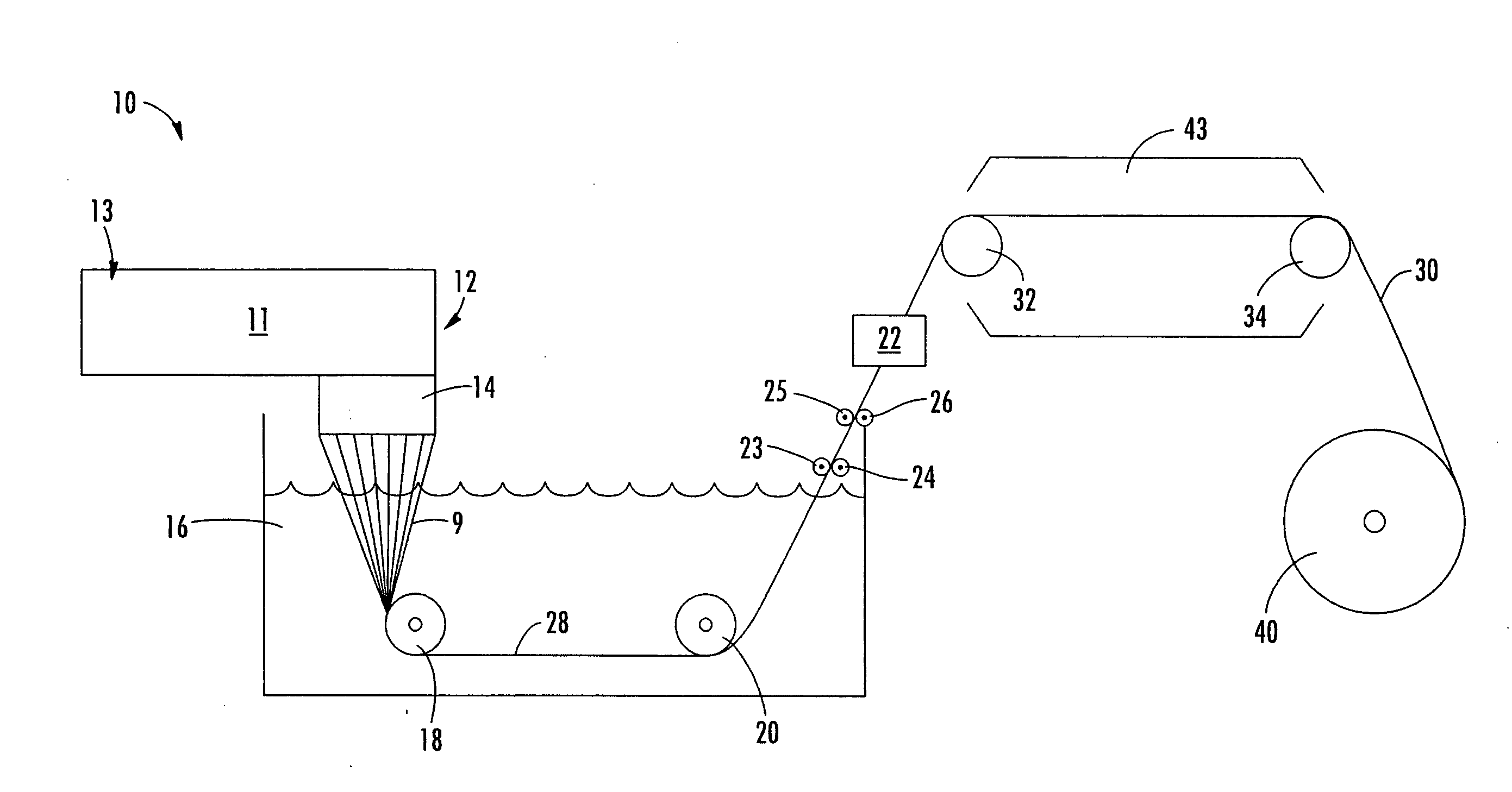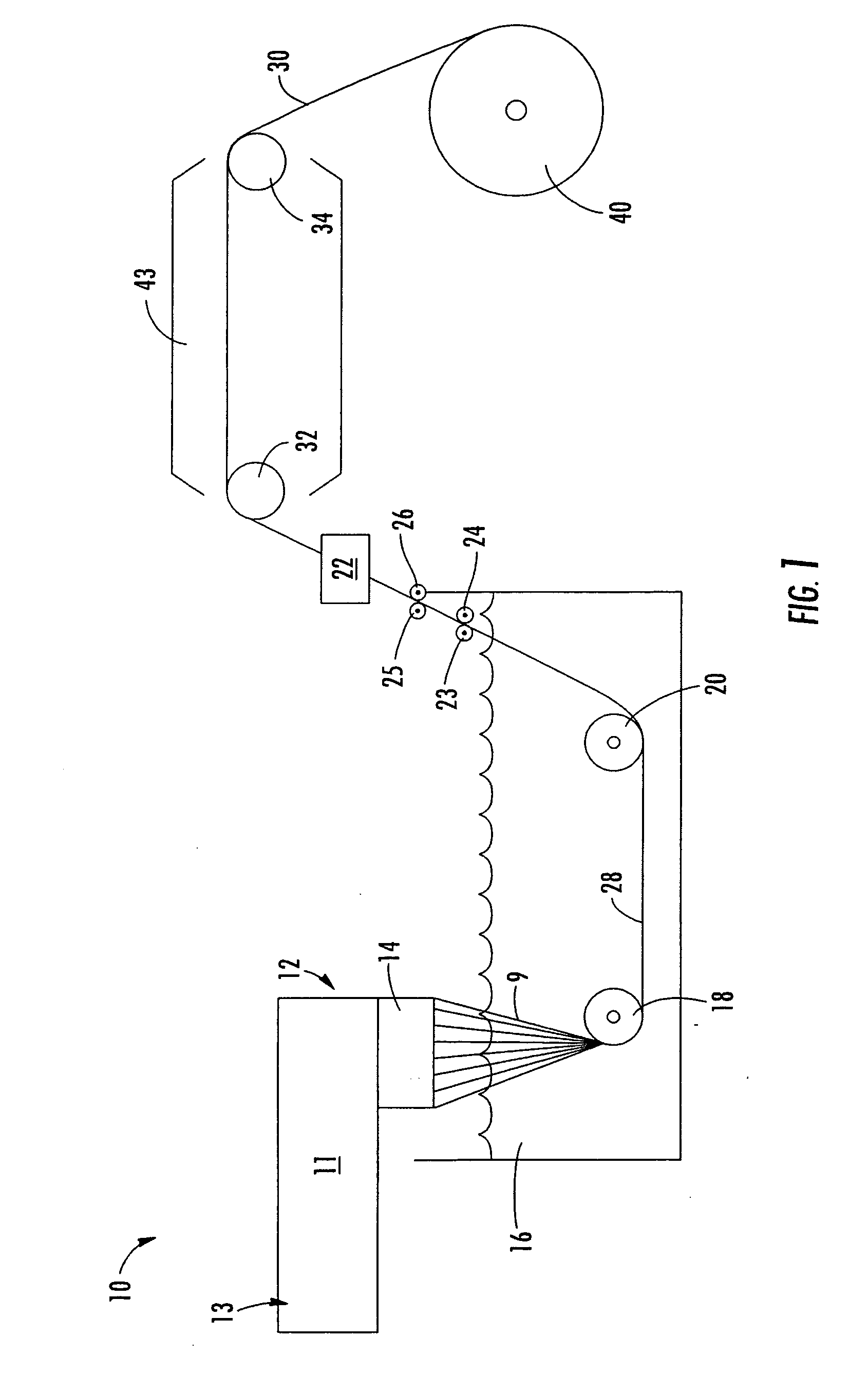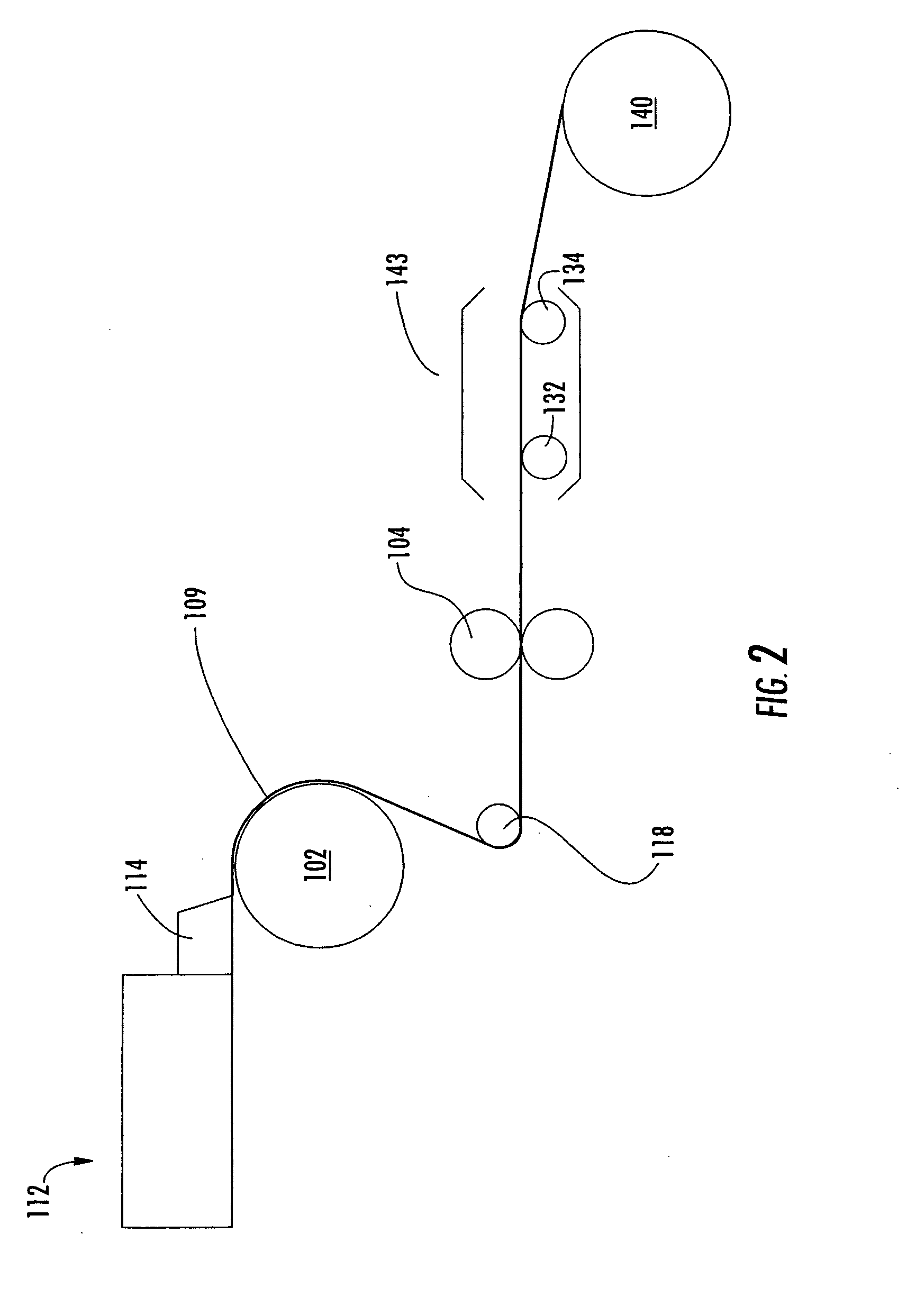Low dielectric composite materials including high modulus polyolefin fibers
a high modulus polyolefin, low dielectric technology, applied in weaving, high frequency circuit adaptation, synthetic resin layered products, etc., can solve the problems of high cost, inability to meet electrical applications at high usage rates, and often prohibit materials formation and materials costs, etc., to achieve excellent characteristics, improve bonding strength, and promote bond formation
- Summary
- Abstract
- Description
- Claims
- Application Information
AI Technical Summary
Benefits of technology
Problems solved by technology
Method used
Image
Examples
example
[0105] High modulus, multi-filament polypropylene yarns were formed according to a process such as that illustrated in FIG. 1. These high modulus polypropylene yarns were incorporated into woven fabrics on a narrow loom. The fibers were 1600 denier and 48 filament polypropylene fibers with a modulus of 16 GPa and tenacity of 700 MPa, and were included in the fabric at 12 picks per inch. The weft was made of 1200 denier low modulus polypropylene yarn as are well known in the art. These woven fabrics were then utilized in forming multi-layer composite structures as herein described. These fabric layers are designated HMPP in the tables and figures that follow. Prior to inclusion in the composite structures, these fabrics were plasma treated on an Enercon Plasma3 plasma treatment device using an atmosphere of 80% helium, 20% oxygen at a gap of 0.04 inches, 50 ft / min, and 2 kW power. Prior to this treatment, the dyne level of the fabric was 32 according to Enercon's measurement method, ...
example 2
[0115] Eight layers of HMPP fabric were layered alternating with a polyethylene film, and then compressed at 150° C and 8,000 psi for 5 minutes. The resulting composite had good stiffness and extraordinary toughness.
[0116] In addition, eight layers of HMPP fabric were layered alternating with a random copolymer polypropylene (RCP) film under similar conditions. The resulting compsite was stronger and stiffer than the composite including the polyethylene film, and still extraordinarily tough.
[0117] As a comparative example, eight layers of HMPP fabric were overlaid together with no polymeric binding agent. Three identical structures were compressed at 150° C., 155° C., and 160° C., respectively, and held at 8000 psi for 30 minutes. In each case, the resulting layers peeled apart easily, and at 160° C., the fibers were found to have shrunk to one half of their original length.
PUM
| Property | Measurement | Unit |
|---|---|---|
| frequency | aaaaa | aaaaa |
| frequency | aaaaa | aaaaa |
| dielectric constant | aaaaa | aaaaa |
Abstract
Description
Claims
Application Information
 Login to View More
Login to View More - R&D
- Intellectual Property
- Life Sciences
- Materials
- Tech Scout
- Unparalleled Data Quality
- Higher Quality Content
- 60% Fewer Hallucinations
Browse by: Latest US Patents, China's latest patents, Technical Efficacy Thesaurus, Application Domain, Technology Topic, Popular Technical Reports.
© 2025 PatSnap. All rights reserved.Legal|Privacy policy|Modern Slavery Act Transparency Statement|Sitemap|About US| Contact US: help@patsnap.com



